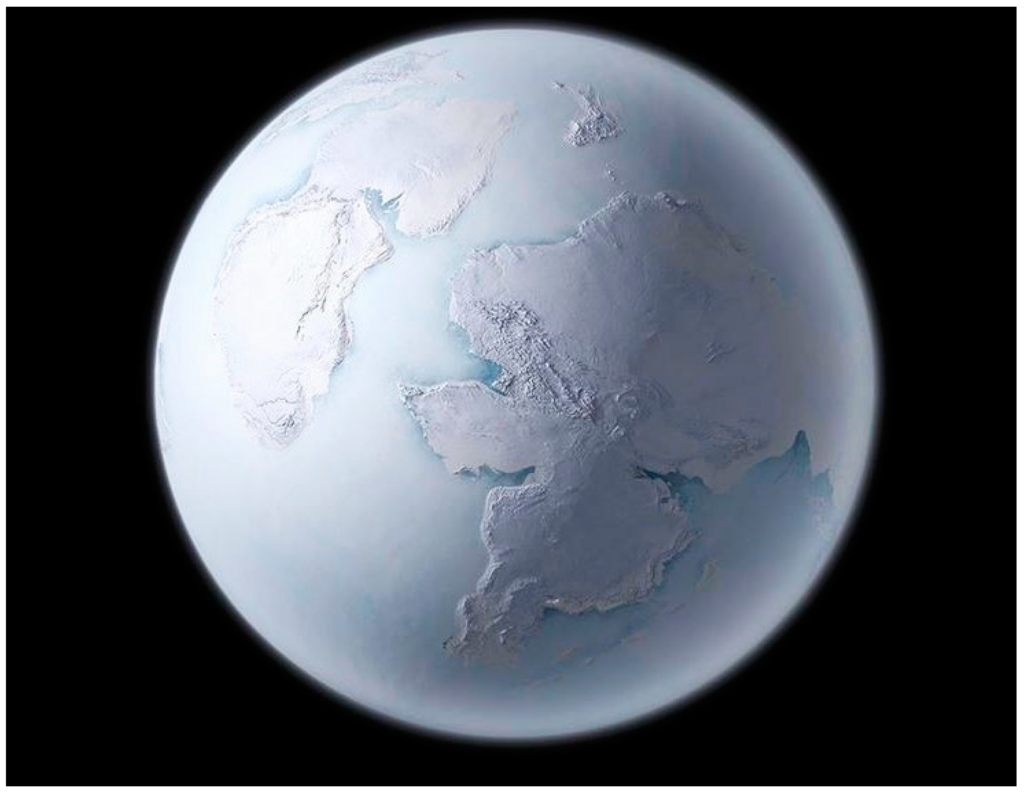A new study by scientists allows us to take a fresh look at the period of Earth’s history when it was completely covered in ice. This event happened several hundred million years ago and is known as the “snowball earth”. Researchers have proven that it could have been caused by an asteroid impact.

When the Earth was completely covered with ice
Scientists from Yale, Chicago, and Vienna universities have conducted a study on whether collisions with large asteroids could have caused complete glaciation of our planet in the past. The results of their research were published in the journal Science Advances.
Scientists have long known that the last glaciation that occurred several tens of thousands of years ago was not the largest in the history of our planet. Back then, glaciers covered the Earth only up to the latitudes corresponding to modern Ukrainian cities Kyiv and Dnipro. But once upon a time, ice fields reached the equator.
Such events are known as “snowball earths” and occurred at least twice during the Proterozoic era between 720 and 635 million years ago. In fact, during these periods, the Earth and its oceans were completely covered with ice.
Usually, such catastrophic events are explained by the fact that the level of carbon dioxide in the Earth’s atmosphere was decreasing to zero at that time. Accordingly, the greenhouse effect was disappearing. However, scientists cannot explain what could have caused such powerful changes. So, the authors of the new study decided to check whether collisions with asteroids could have caused this.
Could an asteroid collision have frozen the Earth?
The main mechanism by which an asteroid collision could cause a sharp cooling across the planet is similar to the “nuclear winter” scenario. If the explosion lifts many particles to a high altitude, they will reduce the amount of light reaching the Earth’s surface for months and years.
In addition, scientists know that when an ice age occurs, ice caps themselves further cool the planet by reflecting most of the sun’s radiation, further cooling the planet. But scientists did not know whether the interaction of these two or any other factors could cause ice to appear at the equator.
To find out, the scientists used a computer model of air and ocean mass movement used to simulate climate change. They created four scenarios that corresponded to the following situations: the pre-industrial era (150 years ago), the last glacial maximum (21 thousand years ago), the Cretaceous period (145-66 million years ago), and the Neoproterozoic (1 billion-542 million years ago).
The modeling showed that in relatively warm periods, such as the pre-industrial era and the Cretaceous period, asteroid impacts and the resulting temperature drop could not have caused a complete glaciation of our planet. Their impact is too weak for that.
But if the Earth had been cooled by another factor before the impact, such as the surface tilted toward the sun’s rays, which regularly occurs as a result of Milinkevich cycles, or low solar luminosity, the effects would overlap and cause a strong feedback loop. The more ice there is, the faster its area increases.
Studies have shown that in the Neoproterozoic, changes due to an asteroid impact could occur extremely quickly. The transition from a situation where ice caps reach only temperate latitudes to 10-meter ice at the equator could have occurred in just one decade.
Based on materials: phys.org

